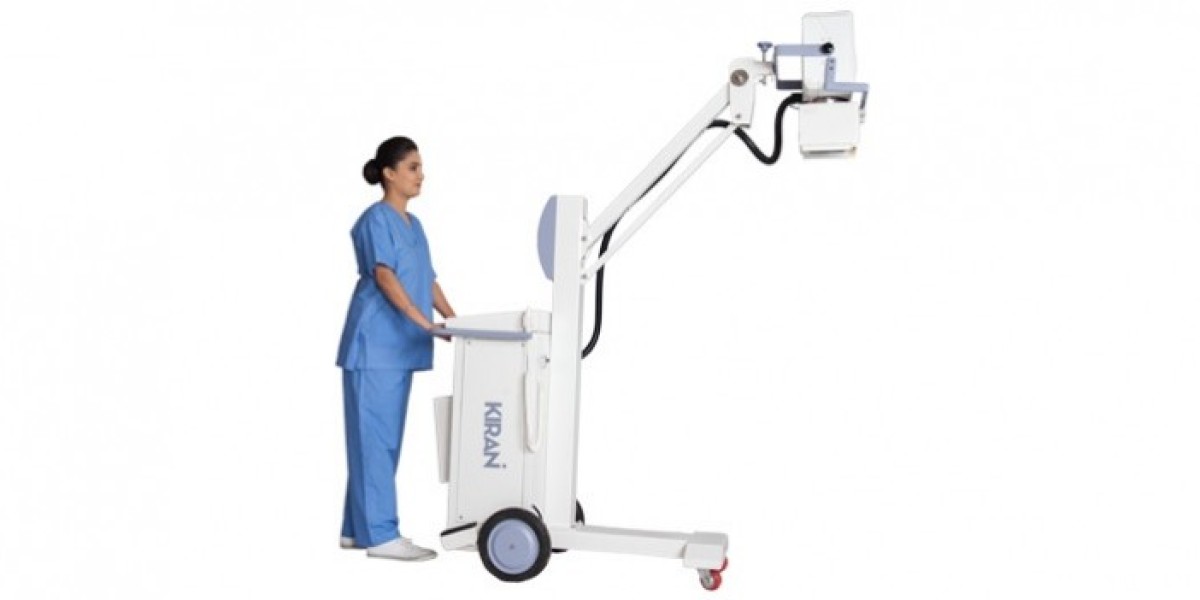In today’s healthcare landscape, diagnostic imaging plays a vital role in identifying and treating medical conditions with precision and efficiency. Radiography and radiology machines are the cornerstone of this capability, enabling clinicians to visualize internal structures and make accurate diagnoses. As hospitals, diagnostic centers, and clinics continue to expand their diagnostic capabilities, one recurring question that arises is about the Radiography Machine Price and Radiology Machine Price in India.
Understanding what influences these prices, the types of machines available, and how to choose the right equipment is crucial for making cost-effective and clinically sound decisions.
What Is a Radiography Machine?
A radiography machine is a type of diagnostic imaging equipment that uses X-rays to create images of the internal structures of the body. These machines are most commonly used for chest X-rays, bone imaging, and detecting fractures, infections, or diseases. Radiography is a non-invasive procedure, and its speed, efficiency, and clarity make it a first-line diagnostic tool in many healthcare settings.
What Is a Radiology Machine?
While the term radiography specifically refers to X-ray-based imaging, radiology is a broader discipline that includes various imaging technologies such as:
Digital X-ray (DR/CR Systems)
Computed Tomography (CT)
Magnetic Resonance Imaging (MRI)
Ultrasound Imaging
Mammography
Fluoroscopy
The term Radiology Machine can thus refer to any of these imaging systems, depending on the context. This broad usage impacts the Radiology Machine Price, as costs can vary drastically between modalities.
Key Factors Influencing Radiography Machine Price
The Radiography Machine Price can range from ₹5 lakhs to over ₹50 lakhs based on the following factors:
1. Technology Type: Analog vs Digital
Analog systems are less expensive but are becoming obsolete.
Digital Radiography (DR) systems provide better image quality, faster results, and reduced radiation dose, commanding a higher price.
2. Image Processing Software
Advanced image processing software, such as AI-powered detection or cloud-based reporting, increases machine cost but enhances diagnostic accuracy.
3. Brand and Manufacturing Origin
Machines manufactured by global brands may cost more than those made domestically. However, Indian manufacturers like Trivitron Healthcare offer globally competitive, reliable machines at a lower cost, providing excellent value for money.
4. Portability
Portable and mobile X-ray units are ideal for emergency departments or field diagnostics but come at a premium due to their mobility and compact design.
5. After-sales Support and Warranty
The cost of maintenance contracts, warranty period, and availability of spare parts can also impact the overall Radiography Machine Price.
Understanding Radiology Machine Price
Given the wide variety of equipment classified under radiology, the Radiology Machine Price can range from ₹5 lakhs for basic X-ray systems to several crores for high-end MRI or CT systems.
1. Type of Equipment
X-Ray systems: ₹5 to ₹50 lakhs
CT Scanners: ₹1 crore to ₹5 crores
MRI Machines: ₹3 crores to ₹15 crores
Ultrasound Machines: ₹5 lakhs to ₹70 lakhs
Mammography Systems: ₹15 lakhs to ₹1 crore
2. Imaging Capacity and Detector Size
Higher imaging resolutions and larger detectors add to the cost but are crucial for complex diagnostic procedures, especially in oncology or cardiovascular imaging.
3. Automation and AI Features
Smart radiology machines equipped with AI-driven diagnostic tools are priced higher due to their advanced capabilities in image interpretation and workflow efficiency.
Why Trivitron Healthcare Stands Out
Trivitron Healthcare is a leading medical technology company that offers a wide range of imaging solutions tailored to meet the needs of healthcare providers across India and beyond. With in-house manufacturing facilities and a strong R&D focus, Trivitron delivers machines that are not only technologically advanced but also cost-effective.
Key Benefits:
Competitive Radiography Machine Price without compromising on quality
Locally supported service network for prompt maintenance
Customizable systems for hospitals, diagnostic centers, and mobile units
Regulatory compliance and global certifications
How to Choose the Right Radiography or Radiology Machine
Investing in radiology equipment is a significant decision. Here are some best practices for healthcare providers:
1. Evaluate Clinical Requirements
Assess the type and volume of imaging required. A high-volume diagnostic center may need a digital DR system or a CT scanner, while a rural clinic may suffice with a portable X-ray unit.
2. Budget and ROI
Look beyond the initial Radiography Machine Price or Radiology Machine Price and consider long-term benefits such as speed, patient throughput, and reduced maintenance costs.
3. Check Regulatory Standards
Ensure the equipment complies with the AERB (Atomic Energy Regulatory Board) standards in India and comes with necessary safety certifications.
4. After-sales Support
Choose a manufacturer or supplier who offers robust technical support, training, and readily available spare parts.
5. Scalability
Opt for modular systems that can be upgraded with future technologies, such as AI integrations or enhanced imaging software.
Conclusion
Whether you’re starting a new diagnostic facility or upgrading an existing one, understanding the dynamics of Radiography Machine Price and Radiology Machine Price is essential for making informed decisions. With the evolution of imaging technologies, the right investment can significantly improve patient care outcomes while delivering long-term financial value.
Trivitron Healthcare is committed to helping healthcare providers across India access world-class radiology solutions at competitive prices. Our wide range of imaging equipment is designed to deliver accuracy, efficiency, and reliability across diverse clinical needs.
If you’re exploring options or need a detailed quote, our team is here to help guide you through your investment with the latest in medical imaging.







